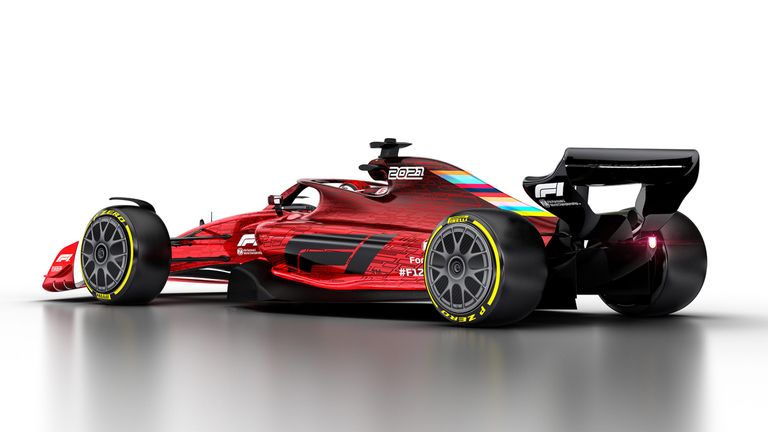Formula 1, the pinnacle of motorsport, is synonymous with speed, precision, and cutting-edge technology. At the heart of this exhilarating sport lies the Formula 1 car, a marvel of engineering that pushes the boundaries of what is mechanically and aerodynamically possible. These high-performance machines are far more complex than they may appear on the surface, and this article aims to delve into the intricacies that make a Formula 1 car so fascinating and complex.
Power Unit – The Heart of the Beast
The power unit of a Formula 1 car is its beating heart. It is an intricate assembly that combines a hybrid powertrain, incorporating an internal combustion engine (ICE) and energy recovery systems (ERS). The ICE, a V6 turbocharged engine, produces approximately 850 horsepower, which is nothing short of remarkable given its 1.6-liter capacity. This power unit is engineered to operate efficiently under extreme conditions, with temperatures reaching up to 1,000°C.
The ERS, consisting of the MGU-K (Motor Generator Unit – Kinetic) and MGU-H (Motor Generator Unit – Heat), contributes significantly to the car’s overall power output. The MGU-K captures energy during braking, storing it in the Energy Store (ES), and can subsequently deploy it to deliver additional power when required, thereby enhancing acceleration and speed. Meanwhile, the MGU-H harnesses heat energy from the exhaust gases to further improve overall efficiency, reducing turbo lag and enhancing throttle response.
Aerodynamics – Slicing Through the Air
One of the most visually striking aspects of a Formula 1 car is its aerodynamic design. These machines are engineered to cut through the air with minimal resistance while generating immense downforce to increase grip and stability. The aerodynamics of a Formula 1 car are an intricate dance of airflow, featuring elements like the front wing, bargeboards, diffuser, and rear wing.
The front wing, for instance, is designed to generate downforce and direct air to various parts of the car, optimizing aerodynamic balance. Its shape, angle, and size are meticulously tuned to suit different track conditions and car setups.
The bargeboards, positioned along the car’s sides, help manage airflow around the front wheels, reducing turbulence and enhancing stability. The diffuser at the rear of the car accelerates the airflow, creating a low-pressure zone that generates additional downforce, while the adjustable rear wing allows drivers to fine-tune the balance between drag and downforce during the race.
Chassis – A Lightweight Monocoque
The chassis of a Formula 1 car is a masterpiece of lightweight engineering. Constructed from carbon fiber composites, it is incredibly strong and rigid while being remarkably light. The monocoque, a one-piece structure forming the driver’s cockpit and front section of the car, prioritizes safety in its design to protect the driver in case of a crash.
The chassis also plays a pivotal role in the car’s overall balance. We carefully optimize the placement of various components, such as the engine and fuel tank, to achieve the desired weight distribution, ensuring the car handles predictably and responds to the driver’s inputs with precision.
Formula 1 CarTires – The Critical Connection
The tires on a Formula 1 car are far from ordinary. They are specially designed to handle the immense forces exerted on them during high-speed racing. Pirelli, the official tire supplier for Formula 1, creates bespoke tires for each season, taking into account factors like track surface, weather conditions, and team preferences.
Formula 1 tires are not only responsible for providing grip but also play a crucial role in managing the car’s performance. Teams must carefully manage tire wear and temperature to optimize their strategy during a race. This involves monitoring tire pressures, choosing the right compound for the conditions, and executing pit stops with precision.
Data and Telemetry – The Brainpower
Modern Formula 1 cars feature a complex network of sensors and telemetry systems that continually collect data on the car’s performance. The team’s engineers receive this real-time data, enabling them to make crucial race-time decisions.
The team monitors and analyzes every aspect of the car’s operation, from engine performance to tire wear. Engineers can adjust the car’s settings remotely, optimizing its performance throughout the race. In Formula 1, where the difference between victory and defeat can be measured in fractions of a second, this level of data analysis and control plays a crucial role in achieving success.
Formula 1 Car Suspension – Balancing Act
The suspension of a Formula 1 car is a delicate balancing act between providing stability and ensuring the tires maintain maximum contact with the track. The intricate suspension system allows for precise adjustments to be made to the car’s ride height, camber, toe, and damping characteristics.
Suspension settings are crucial in optimizing the car’s performance on different types of tracks. On bumpy circuits, for example, teams may opt to soften the suspension to maintain tire contact with the track surface, whereas on smoother tracks, they might prefer a stiffer setup to enhance handling and cornering speed.
The Formula 1 car is a testament to human engineering ingenuity, pushing the boundaries of what is technologically possible. Engineers meticulously engineer and test every aspect of a Formula 1 car, from its power unit, which combines hybrid technology and thermal efficiency, to its aerodynamic design that enhances performance and safety.
These high-performance machines are not only marvels of engineering but also a testament to the relentless pursuit of speed, precision, and excellence that defines Formula 1. As technology continues to evolve, so too will the complexity of these incredible racing cars, ensuring that Formula 1 remains at the forefront of motorsport innovation for years to come.
